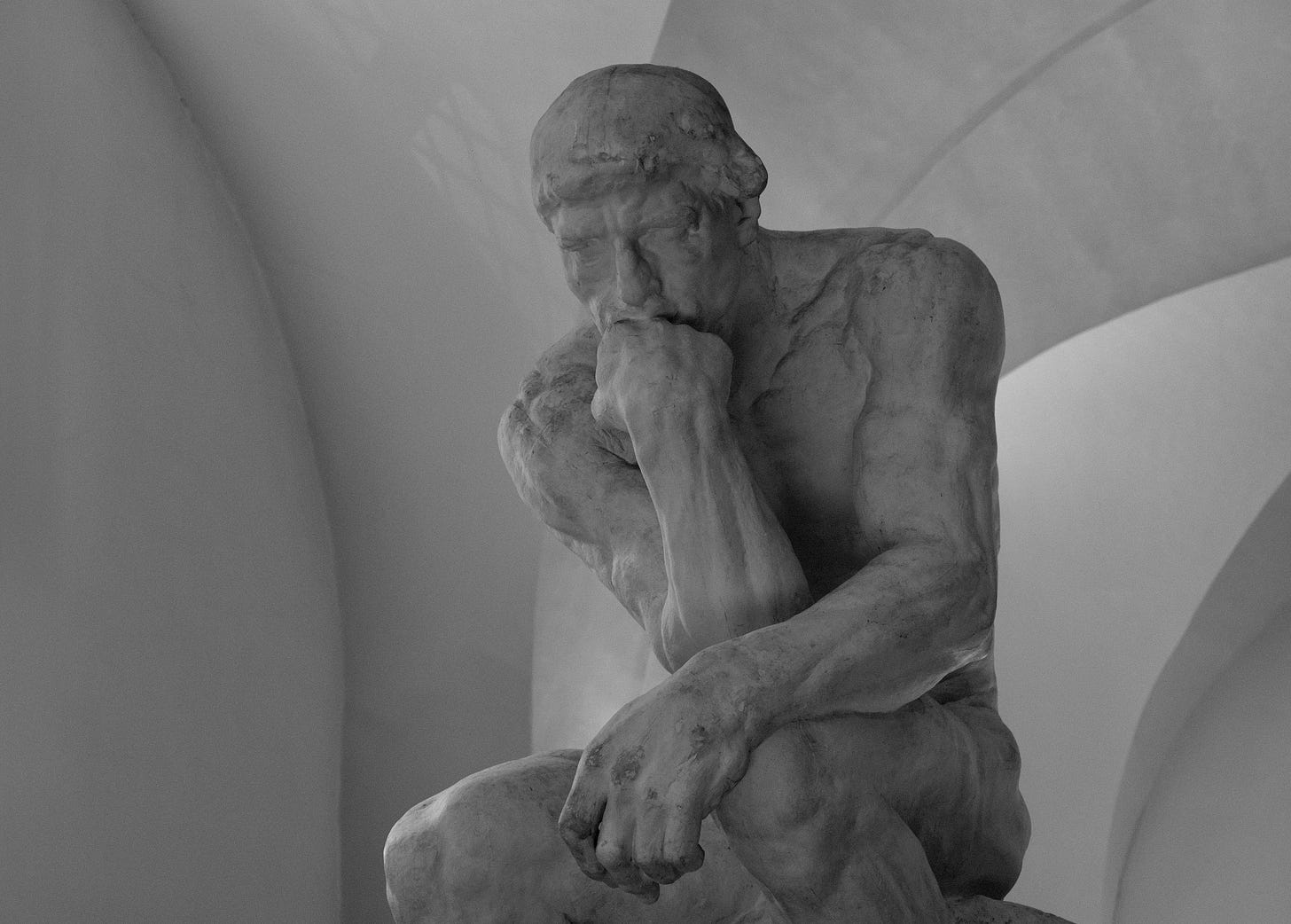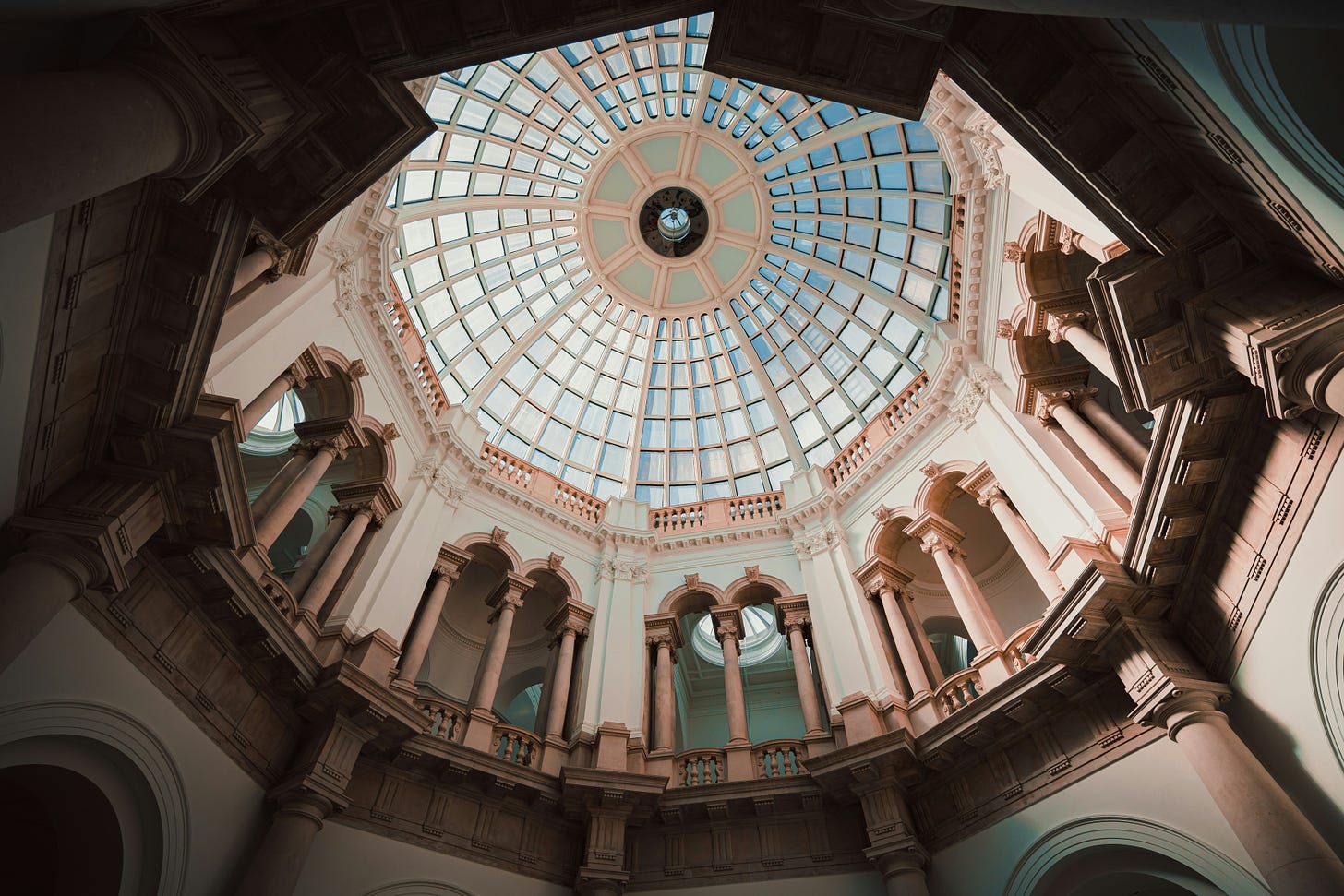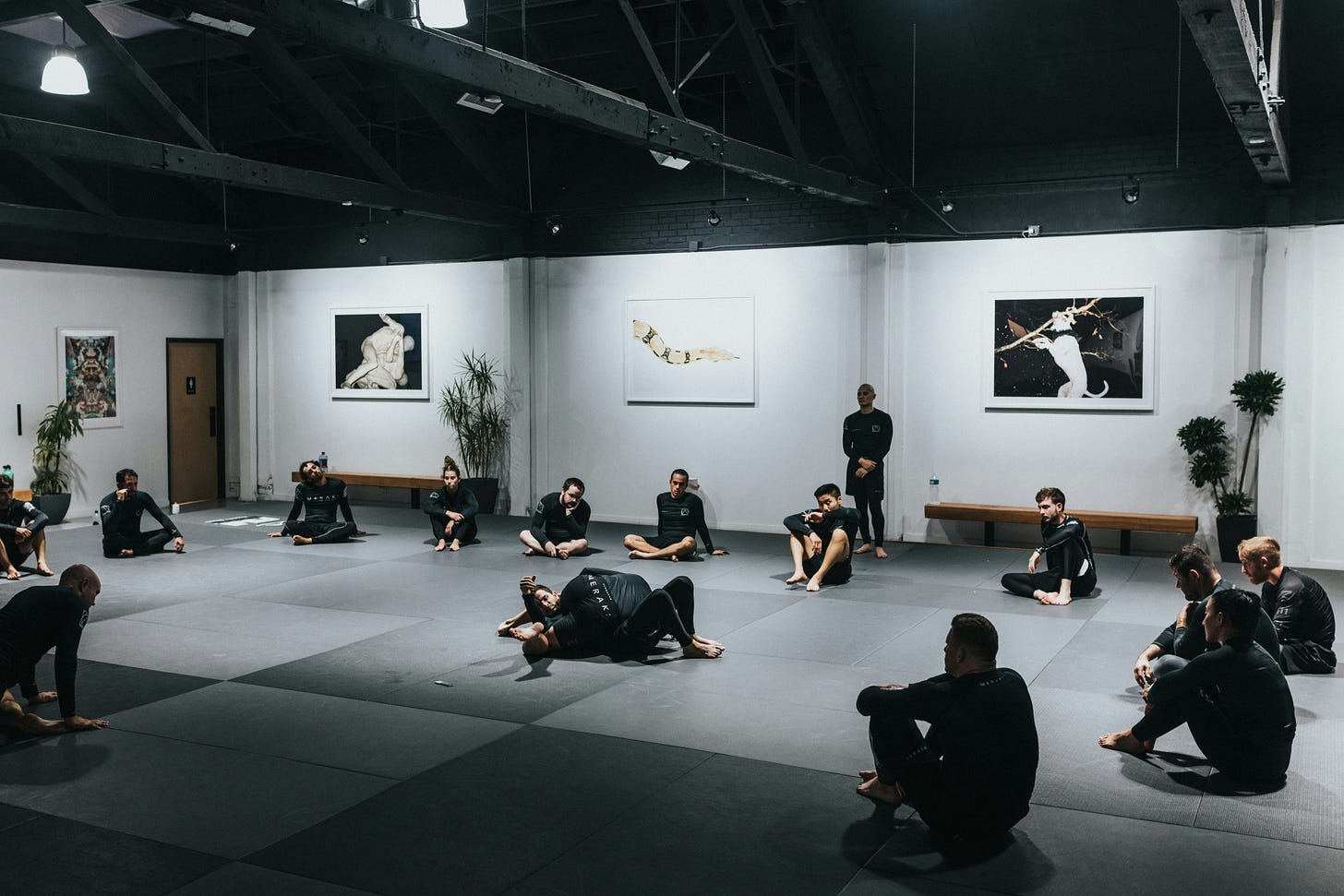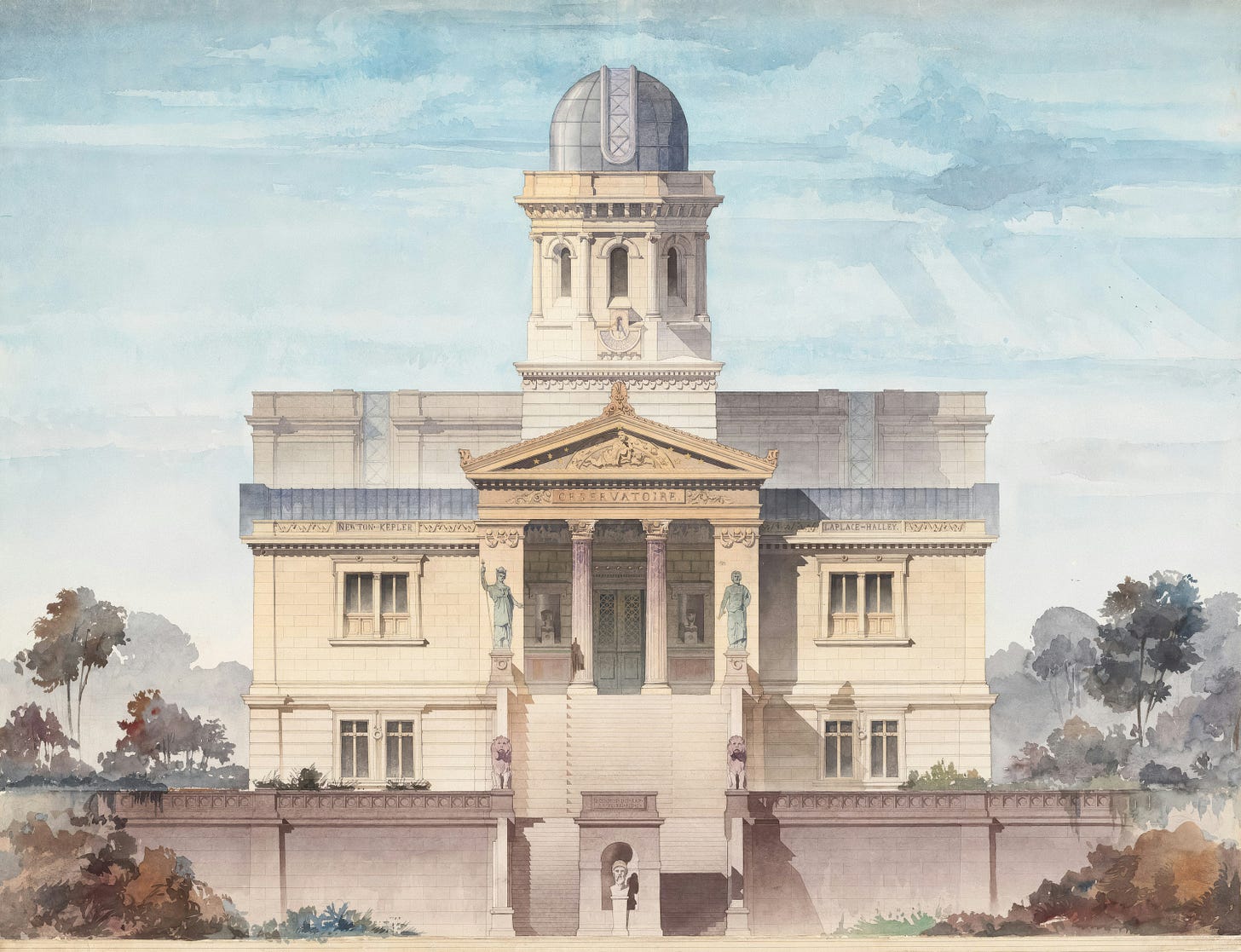Institutional Design
Every institution has a guiding logos that shapes both what it is and how it enables reality to show up for its community.
I’ve been thinking about institutional design lately.
Not just as a set of rules and procedures, but as a set of practices, on the one hand, and a set of purposes on the other, both guided, probably, by aesthetic choices.
In a sense, I’ve been thinking about the metaphysics of institutional design.
Along these lines, in this newsletter you will read about how:
Individual practices transform how reality appears to us, but institutional forms enable deeper, collective modes of perception and engagement
Organizational aesthetics and practices create affordances for collective transformation, but these require appropriate engagement to manifest
The alignment of form (eidos) and purpose (telos) determines an institution’s capacity to enable new modes of collective awareness
This is the deeper purpose of institutional life: not just to coordinate individual action but to enable modes of collective awareness and engagement that transform what’s possible for human communities.
Here’s the phrase I’ve landed on to describe this process: We are building institutions that enable collective practices of world-disclosure.
As always, if you enjoy The Base Camp, consider forwarding this email to your friends and colleagues, or just share this link with your networks.
I. Beyond Rules and Procedures
Every human practice shapes what aspects of reality become visible and meaningful to us. A mathematician’s trained eye sees patterns in data that others miss; an artist perceives subtle relationships of form and color invisible to the untrained observer; a craftsperson directly apprehends possibilities in materials that others wouldn’t notice.
These individual transformations in perception arise through sustained practice—through ways of attending to and engaging with reality that gradually reveal new aspects of the world. But there is another level of perception and engagement that becomes possible only through shared institutional forms.
These are modes of collective awareness and action that transcend what any individual, no matter how well-trained, could achieve alone. Through the careful coordination of space and time, sustained collective practices, and shared modes of attention, institutions create conditions where communities can perceive and engage with aspects of reality that remain invisible to individual effort.
This collective transformation of perception isn’t simply about coordinating individual capabilities. It represents an entirely different order of world-disclosure, one that emerges only through properly structured institutional forms.
What makes this collective disclosure of reality distinct from individual perception?
The difference lies not merely in scale or coordination, but in how institutional forms create the conditions for entirely new modes of collective awareness.
While individual practice can refine and extend our natural capacities for perception, institutional forms enable communities to develop entirely new capacities for seeing and engaging with larger realities over longer timescales.
These forms work by creating specific conditions—through the arrangement of space, the structuring of practice, the development of shared attention—where aspects of reality can show themselves to communities in ways impossible for individuals alone.
II. The Nature of Institutional Design

This is the space, more or less, of institutional design.
When we think of institutional design, we should at first blush think of some set of rule-governed norms and procedures, established by some body of humans towards some aim. Its purpose is to create a set of affordances that can enable specific activities, for specific people, in specific places.
The backdrop against which this design occurs—inside and outside of the institution—may well be full of variables and random, chaotic encounters, but ideally the well-designed institution remains more-or-less itself across time and context. (Or, failing this, it finds adaptive mechanisms by which it can reform itself towards some similar, better defined set of aims and purposes.)
This transformation in how reality appears to us through institutional forms represents one of humanity's most profound achievements.
It suggests that our capacity to perceive and engage with reality isn’t limited to our individual sensory and cognitive capabilities, but can be radically extended through properly structured collective forms. Understanding how this works—how institutional forms enable new modes of awareness and engagement—becomes crucial for anyone concerned with organizational design or institutional development.
This is where we encounter what we might call an institutional logos—drawing on the ancient Greek λόγος (logos), which carries meanings of both “reasoned discourse” and “underlying pattern or order,” but also crucially “that which enables gathering” or “that which lets something show itself.”
We can talk about this logos in all of these senses at once: as the gathering together of reasons and purposes in the mind, as the expressing of these reasons and purposes in missions and written documents; as the gathering together of people and materials, and as the creation of patterns and orders organized towards an aim.
This collective, institutional logos, then, points to more than simply an organizing rule or principle. It indicates the fundamental and aesthetic patterns that enable communities to gather around and perceive reality in transformative ways.
Every institution possesses such a logos, a generative order that determines not just what it does but how it enables reality to appear and be engaged with collectively.
Just as the original Greek conception of logos involved both the capacity for rational discourse and the ability to let things show themselves as they are, an institutional logos creates the conditions through which collective understanding becomes possible.
Understanding this logos requires attention to how institutional forms create conditions for specific modes of collective awareness, how they become effective through sustained practices, and how they shape the very possibilities of communal engagement with reality.
The institutional logos isn’t just a neologism for organizational structure or strategy.
Instead, drawing further on Greek philosophical wisdom, we can understand it as the underlying logic that enables new forms of collective perception and engagement. Just as Plato’s εἶδος (eidos) cannot be separated from the modes of awareness through which it appears, an institution’s essential nature manifests through specific ways of seeing, thinking, and acting that characterize its collective reality.
The logos is both what an institution is and how it enables reality to show up for its community—not as two separate things, but as a single reality appearing through different modes of organizational awareness.
Consider how this works in practice. I’ll give you a few examples from philosophy, science, religion, and martial arts.
III. Forms of World-Disclosure
The western tradition of philosophy itself demonstrates this principle—a millennia-spanning effort where communities thinking in the streets, academies, monasteries, taverns, cafés, and universities gradually developed new ways of perceiving and engaging with fundamental questions of existence.
While individual philosophers made crucial contributions, the real power of philosophical thinking emerged through communal institutional forms that enabled sustained collective inquiry.
The evolution of philosophical practice through different institutional settings—from the agora to the academy to the medieval monastery and modern university—shows how each form created new possibilities for collective thought and understanding.

In the sciences, we see a different but equally powerful manifestation of institutional world-disclosure.
A single researcher might develop remarkable skills in observing cellular behavior through a microscope, but only a well-structured research laboratory—with its complex arrangement of equipment, protocols, collaborative spaces, and shared practices—enables a community of scientists to perceive and engage with the deeper patterns of whole biological systems.
The laboratory’s institutional form doesn’t simply support individual observation; it creates conditions where collective perception becomes possible, where insights emerge through the interplay of multiple observers, instruments, and modes of analysis.
The reality that appears through such institutional forms is qualitatively different from what any individual researcher could discern alone, especially when it comes to the intricacies involved in creating our most advanced technological instruments, like the world’s largest observatories and research centers.

Religious worship in the Church community, especially in the great networks of cathedrals and monasteries, represents another distinct form of institutional world-disclosure.
Through its careful arrangement of space, light, and sound, its ritualized patterns of movement and gathering, and its accumulated traditions of worship and contemplation, it enables communities to perceive and engage with spiritual reality in ways impossible through individual devotion.
The cathedral’s aesthetic form—from its soaring vaults to its ordered processional spaces, from its cycles of liturgical practice to its orchestration of collective attention—creates conditions where sacred reality can manifest itself to the community as a whole.
This isn’t merely about individual spiritual experience amplified; it’s about forms of religious understanding that emerge only through properly structured collective engagement.

In the domain of physical culture, the martial arts gym manifests yet another mode of collective world-disclosure.
Through its configuration of training equipment, its hierarchy of expertise embodied in coaches and senior practitioners, and its carefully structured practices of sparring and drilling, it enables groups to discover and advance aspects of human instinct and capacity that no individual could access alone.
The institutional form of the gym—its arrangement of training spaces, its progression of technical instruction, its patterns of partner work and collective learning—creates conditions where deeper patterns of movement, timing, and tactical understanding become visible and achievable through expert action.
The knowledge that emerges here isn’t just aggregated individual skill; it’s a form of collective bodily understanding that requires the full institutional structure of the gym or studio maintained over generations to manifest.

These institutional centers aren’t merely physical arrangements or sets of rules and procedures, though they are that as well.
They emerge from the interaction of space, activity, and collective purpose.
There are a few thinkers who are worth special note in understanding these dynamics.
One is J.J. Gibson and his concept of affordances—the meaningful possibilities for action that emerge from the fit between environment and actor.
In institutional life, spaces and structures create affordances for collective modes of perception and engagement. However, unlike basic physical affordances—like the “ascent ability” of a staircase—institutional affordances require specific forms of collective practice to become visible and effective.
This is where practice (askēsis) becomes crucial.
Institutional practices aren’t just coordinated activities—they are ways of attuning communities to new aspects of reality.
Think of our examples once more: A laboratory’s potential for scientific discovery emerges not just from its equipment but from sustained collective practices of observation and analysis. A cathedral’s capacity to reveal spiritual reality manifests through communal practices of worship and contemplation. A martial arts studio is a full of equipment and practitioners that enable sustained feedback loops necessary for the cultivation of high-level martial capacity.
IV. Design as World-Making
A second person worthy of note here is Marshall McLuhan and his famous phrase “the medium is the message.” McLuhan understood that the form of communication shapes its content, but this notion also applies to our social organization: Institutional forms shape what aspects of reality can appear to a community.
There is a special kind of techne—purposeful, skill designed—that applies to institutions just as much as it does to the creation of physical artifacts (chairs, tables) or artistic objects (paintings, sculptures). The medium in the context of the institution is its logos and its message is inextricable from its form.
In other words, the very structure of an institution—its interaction patterns, decision-making processes, technological choices—becomes not just a vehicle for activity but a medium through which reality is collectively perceived and engaged with in new ways.
This logos encompasses several key dimensions that together constitute an institution’s capacity for collective transformation:
Form (eidos): The essential pattern that shapes not just how the organization structures itself, but how it enables reality to appear to its community.
Purpose (telos): The fundamental aim that guides the institution’s development—not simply stated goals but the final causes that shape what aspects of reality the institution can collectively disclose and engage with.
Practice (askēsis): The sustained activities through which the institution’s transformative potential becomes actual. These aren’t merely procedures but ways of disclosing new aspects of reality through collective engagement.
Modes of Awareness: The various ways reality appears to the institutional community, shaped by their collective practices and positions within the organizational whole.
The manifestation of institutional logos through design and space deserves particular attention, and this brings me to the last figure I wanted to mention.
The architect and philosopher Christopher Alexander’s insight that places express varying degrees of “life” through the harmony of their “centers” offers a powerful way to understand how institutional forms enable collective perception.
The arrangement of space and structure isn’t just about enabling certain activities—it’s about creating conditions where new modes of collective perception become possible. When institutional aesthetics align with the organization’s deeper logos, they create what Alexander calls “living” centers—patterns that enable communities to perceive and engage with reality in transformative ways.
This understanding of living centers helps us grasp how the institutional logos manifests through what we might call institutional aesthetics—the tangible forms that enable collective perception. These forms include:
Physical spaces that shape modes of collective attention
A calendar of rhythms and dates that coordinate action
Aesthetic elements that guide communal understanding
Practices and routines that structure collective engagement
Communication patterns that enable shared insight
Decision-making processes that afford collective perception
These aesthetic elements don’t simply coordinate activity; they create conditions for new forms of awareness. This relationship between form and practice explains why institutional aesthetics create dynamic patterns that shape how communities can perceive and engage with reality together, as a form of world-making.

V. The Immanence of Form
Just as individual practices of attention and transformation allow new aspects of reality to become visible to us, institutional forms create the conditions for collective modes of perception and engagement that transcend individual capability.
This understanding reveals institutions as more than mere structures for coordinating action—they are collective practices for transforming how the world can appear and be engaged with.
The institutional logos, properly understood and manifested through appropriate forms and practices, enables communities to achieve levels of world-disclosure that no individual could attain alone.
This relationship between institutional form and world-disclosure lies at the heart of how organizations transform human capability. It’s not simply that institutions coordinate individual efforts or aggregate individual insights.
Rather, they create the conditions where reality can appear in new ways, where aspects of the world invisible to individual perception become manifest through collective engagement. Understanding how this works—how institutional forms enable new modes of awareness and engagement—becomes crucial for anyone concerned with organizational design or institutional development.
In this light, the challenge of institutional design becomes clear: How do we create forms and practices that enable these heightened and specific modes of collective perception and engagement? How do we shape institutional aesthetics that create affordances for deeper communal understanding?
The answer lies in recognizing that the institutional logos isn’t just a pattern to be implemented from outside but a collective and immanent achievement that emerges from within—through the careful alignment of form, practice, and purpose.
When this alignment is achieved, institutions become more than the sum of their participants’ individual capabilities. They become vehicles for collective transformation in our very capacity to perceive and engage with reality.
Our age of rapid change presents us with not just a challenge of adaptation but an opportunity for transformation in how we collectively see and act in the world.
The task isn’t simply to make our institutions more efficient or responsive, but to design them as forms through which communities can achieve new modes of perception and engagement—new ways of letting reality show up and be engaged with collectively.
This is the deeper purpose of institutional life: not just to coordinate individual action but to enable forms of collective awareness and engagement that transform what’s possible for human communities.
We are building institutions that enable collective practices of world-disclosure.




